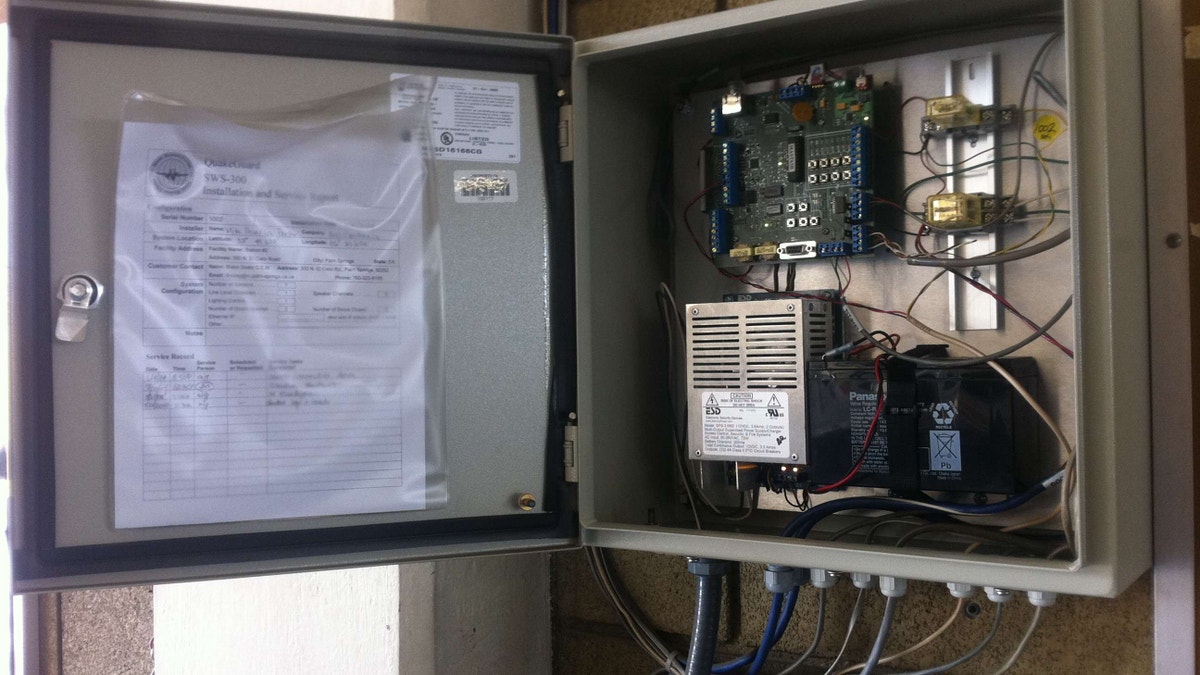
A state-of-the-art, first-in-the-world earthquake early warning system in now installed and operational in California.
What if you could be alerted before the only natural disaster that offers no warning actually hits? Even if the alert came just seconds sooner?
In California's Coachella Valley around Palm Springs, a state-of-the-art, first-in-the-world earthquake early warning system in now installed and operational. Twelve locations are now in place with 120 sites planned, all meant to detect an earthquake and give people a chance to get under a table, or in the case of a fire station, get the engines outside of the building.
Created by a Silicon Valley startup, QuakeGuard sensors are designed to detect the initial, or "P" energy waves given off by every quake, even though it's only the later, or "S" waves that do all the damage. The time in-between the two waves varies depending on the proximity to the epicenter and as the first sensor closest to the quake goes off, it can offer advance notice -- from a few seconds to a full minute-- to other locations farther away.
As former seismic safety commissioner Dennis Mileti tells us, “This is the No. 1 line of defense to accomplish the most basic objective in responding to an earthquake ... duck, cover and hold on, and it can motivate people to do that before the ground starts shaking. Every other natural hazard has warnings issued for it, earthquakes don’t. This is the way to provide some warning.”
The system can also be set to automatically open fire station doors, and water and gas valves for municipalities could be shut off. Back-up generators for hospitals could be turned on and, most importantly, warn school kids to duck and take cover. During a tour of a Palm Springs Fire Station, Tom Kirk from the Coachella Valley Association of Governments, says, “For this fire station, doors roll up; for a school, an alarm might sound, teachers tell the kids to duck and cover; for a hospital, maybe backup generators go on.”
If 15 or 20 seconds doesn't seem like much, consider this: During last April's huge Baja, Calif., quake, fire trucks in Calexico were trapped behind jammed fire station garage doors for almost 20 minutes and had to cut their way through the doors before they could deploy and respond to people in trouble. Other stations had pieces fall from the ceiling and damage equipment. With QuakeGuard, this would not have happened because in as little as 15 seconds the doors could be opened and the engines driven outside.
Of the 12 sets of sensors currently set in place throughout the Coachella Valley, all tied to fire stations, they will soon be networked to every school in the area. Down the road, local officials see it linked to hospitals, private businesses and even people's homes. Eventually, the designers would like to see it become like another utility, with alarms installed in every home willing to fork over a minimal monthly "subscription" fee. At this point, it costs between $1 million and $3 million to install such a network throughout a community, and there are four others in various stages: San Diego, the Bay Area, the Antelope Valley and Hawaii.
A mobile system is also in development and would be essential for rescue crews that deploy to places like Haiti or Chile when an aftershock hits. A few seconds could get rescuers out from under the rubble and thus out of harm's way. Also, if you think this a California centered story, think again. Major earthquakes have struck throughout the United States, and places like St. Louis and even New York City are in harm's way.
